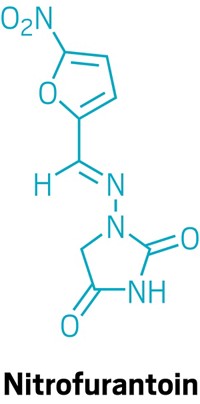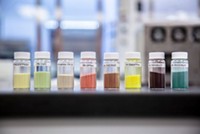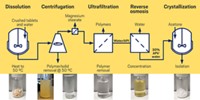Advertisement
Grab your lab coat. Let's get started
Welcome!
Welcome!
Create an account below to get 6 C&EN articles per month, receive newsletters and more - all free.
It seems this is your first time logging in online. Please enter the following information to continue.
As an ACS member you automatically get access to this site. All we need is few more details to create your reading experience.
Not you? Sign in with a different account.
Not you? Sign in with a different account.
ERROR 1
ERROR 1
ERROR 2
ERROR 2
ERROR 2
ERROR 2
ERROR 2
Password and Confirm password must match.
If you have an ACS member number, please enter it here so we can link this account to your membership. (optional)
ERROR 2
ACS values your privacy. By submitting your information, you are gaining access to C&EN and subscribing to our weekly newsletter. We use the information you provide to make your reading experience better, and we will never sell your data to third party members.
Materials
Sound Waves Provide A Green, Scalable Way To Make Pharmaceutical Cocrystals
Chemical Engineering: Resonant acoustic mixing produces multigram quantities of cocrystals using minimal solvent
by Sarah Webb
January 30, 2014

Ideally the active ingredient of an oral medication should readily form crystals, dissolve quickly in the digestive tract, and be rapidly absorbed in the body. If a compound can’t do these on its own, scientists can help it by crystallizing the compound with one or more others, forming cocrystals with the desired properties. Now researchers report that vigorously combining compounds using intense sound waves—a technique known as resonant acoustic mixing—could provide a scalable and green way to produce pharmaceutical cocrystals (Org. Process Res. Dev. 2014, DOI: 10.1021/op4003399).
Many active pharmaceutical ingredients don’t have ideal crystalline properties, says Stephen R. Anderson of Nalas Engineering Services, a chemical technology firm in Centerbrook, Conn. So to improve solubility and bioavailability, scientists sometimes look for another compound, called a coformer, that can bind to the drug molecules using hydrogen bonds or other noncovalent interactions. As the two types of molecules pack together in a regular pattern and in a defined ratio, they produce a new crystalline material known as a cocrystal.
Traditionally chemists have produced cocrystals either by crystallizing the compounds together out of a solution containing both or by grinding the chemicals together mechanically with a mortar and pestle or a ball mill. Mechanical methods limit the use of solvents and are therefore more environmentally friendly, but they are also difficult to carry out on the kilogram or multi-kilogram scales needed in the pharmaceutical industry. As a result, cocrystals have been overlooked in the pharmaceutical industry because they are more complicated to produce than crystals from a single substance, says Mike Zaworotko of the University of Limerick, in Ireland, who was not involved in the study.
Jerry S. Salan, Nalas Engineering’s CEO, thought of a way around this roadblock. He knew that resonant acoustic mixing produces enough force to mix and coat powders, so he wondered if that force also could produce cocrystals like a pestle grinding against a mortar. Acoustic mixers use high-intensity sound waves—with a frequency of about 60 Hz—to transfer mechanical energy to the materials being mixed. The waves vibrate the materials inside a sample vial with forces 10 to 100 times greater than the force of gravity.
As a proof of concept, researchers at Nalas placed the anticonvulsant drug carbamazepine; a coformer, nicotinamide; and a small amount of solvent into a resonant acoustic mixer. After one hour, the combination readily formed cocrystals. These carbamazepine-nicotinamide cocrystals matched the quality of those formed by other methods. The researchers successfully produced cocrystals on a range of scales, using 100 mg, 1.5 g, and 22 g of solid starting material.
Resonant acoustic mixing provides a nice way of screening cocrystallization conditions with various coformers, and it doesn’t need a lot of solvent, says Nalas’s David J. am Ende. Commercially available resonant acoustic mixers come in capacities up to 200 L, which should be sufficient for pharmaceutical-scale operations, the researchers say.
Over the last 10 years, pharmaceutical companies have realized that cocrystallization could offer a way to make better medicines, Limerick’s Zaworotko says. “This paper addresses one of the major hurdles of how to make cocrystals on a larger scale,” he says. Further research will be needed to confirm that the process will scale up and to see if this technique will apply to a range of compounds, he adds.
Nalas has filed a provisional patent for their cocrystallization process and is currently looking for a commercial partner to help them carry out the additional studies needed to scale it up. They also are looking to use the method with compounds other than pharmaceuticals—particularly explosives, where traditional mechanical cocrystallization techniques can be unsafe.





Join the conversation
Contact the reporter
Submit a Letter to the Editor for publication
Engage with us on Twitter